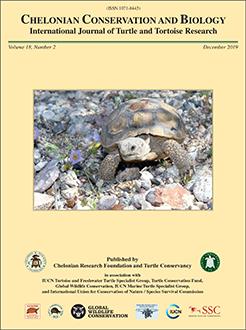Leatherback sea turtles (Dermochelys coriacea) are listed as Vulnerable globally by the International Union for Conservation of Nature. To preserve this species, we must protect them during several life stages, including protecting hatchlings emerging from nests. We studied the timing of emergence of leatherback hatchlings at Sandy Point National Wildlife Refuge, an area created for the protection of this species. We surveyed 524 nests in 2010–2014 and evaluated the time that hatchlings began emerging from the surface of the sand, the time that the last hatchling in the group finished emerging from the sand, the incubation duration of each nest (number of days between deposition and first emergence), and the number of hatchlings in the initial pulse of emergence. In situ clutches (those occurring naturally and not manipulated by location) had an incubation period of 61.4 ± 21.1 d (mean ± SD; n = 332) and emerged from 1825 to 1906 hrs. The incubation duration varied significantly from relocated clutches (those that had been moved at deposition because of erosion threats), had an incubation period of 60.0 ± 2.7 days (n = 192), and emerged from 1827 to 1903 hrs (on average, for all years combined; p < 0.0001). These nests yielded 36.6 ± 21.1 first-emergence hatchlings from in situ clutches, which was different from relocated clutches (14.9 ± 13.6 first-emergence; p < 0.0001). Other studies have found that hard-shelled sea turtles all begin emerging once the sun sets and continue emerging throughout the night. In contrast, we found that leatherback sea turtle hatchlings emerge earlier in the evening, at least at Sandy Point. During the seasons sampled, emergence often began before sunset (between 1834 and 1859 hrs) and hatchlings usually did not continue to emerge through the night. To allocate resources most effectively, beach management programs at Sandy Point National Wildlife Refuge should be maximized between 1700 and 2000 hrs, the period when most hatchlings are emerging and require the most protection from predators. This work provides important information about the timing of leatherback emergence and may be applicable to other leatherback nesting beaches where predation may be a problem. These findings can help ensure that nest protection programs maintain efficiency and protect hatchlings during their vulnerable crawl to the sea.
How to translate text using browser tools
5 November 2019
Emergence Timing of Leatherback Hatchlings (Dermochelys coriacea) at Sandy Point National Wildlife Refuge, 2010–2014
Claire M. Gonzales,
Kelly R. Stewart
ACCESS THE FULL ARTICLE
Caribbean
Dermochelys coriacea
emergence
hatching tendencies
leatherback
Sandy Point





